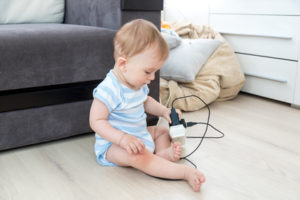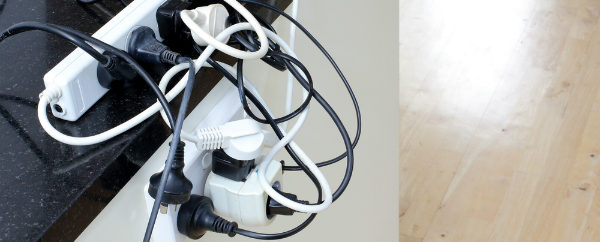 What is a safety switch? Do you know the difference between and RCD and a circuit breaker? A safety switch is one of the greatest electrical safety improvements of the last 25 years. However, you may be surprised to learn that the life-saving devices are missing from more than a third of Australian homes and of those that do have them, the vast majority do not have them on all the necessary circuits. In part this is because many people confuse a circuit breaker and safety switch.
What is a safety switch? Do you know the difference between and RCD and a circuit breaker? A safety switch is one of the greatest electrical safety improvements of the last 25 years. However, you may be surprised to learn that the life-saving devices are missing from more than a third of Australian homes and of those that do have them, the vast majority do not have them on all the necessary circuits. In part this is because many people confuse a circuit breaker and safety switch.
In our last blog post, we talked about electric shocks being one of the 5 most common electrical problems in the home. So when you consider that the average Aussie home has 2 lighting circuits, 2 power circuits and a number of appliance-specific circuits for air conditioning units, hot water etc. for full protection you should have an electrical safety switch on all of them.
Many people confuse safety switches and circuit breakers and therefore believe that they are well protected from electrical injury at home but a safety switch and circuit breaker perform different tasks.
What Is A Safety Switch?
Put simply an electrical safety switch or Residual Current Device (RCD) is designed specifically to prevent electrocution of a person whereas a circuit breaker are designed to protect circuit wiring and appliances.
Safety switches shut off the electrical supply in a fraction of a second when a current leakage is detected, avoiding the potential for serious electric shock, burns or worse. In fact, an RCD can disconnect the circuit within 300 milliseconds!
Circuit breakers, on the other hand, are designed to protect a circuit from overloading or short-circuit.
You can usually recognise a safety switch by the ‘T’ or “Test’ button on the front and this can distinguish it from a circuit breaker which may look similar.
Why do we need to play it safe?
According to Master Electricians Australia*, 15 people are killed every year in preventable accidents in Australian homes and a further 300 sustain serious electrical injuries or burns.
If there is no safety switch installed on the appropriate circuit a serious accident could be caused by something as simple as a child inserting a metal implement into a toaster or a workman drilling through a live cable in a wall. It’s so important not to take electrical safety for granted.
In NSW Safety Switches are mandatory in all new buildings and must be added if extensions or alterations are made to an existing building.
In Queensland there are a number of legal requirements in place to try and ensure homes are protected including that all rental or sale properties have to have safety switches installed on power point circuits. Further details of legal obligations can be found on the Electrical Safety Office website.
Ensuring your family is adequately protected in the home should be the number one priority. After all, accidents do happen and the benefits and protection afforded by such an amazing piece of technology far outweigh cost of installation. When looking at circuit breaker vs safety switch, it’s important to remember that both perform important jobs.
If you would like to get a quote to ensure safety switches are installed on all the circuits in your home, give us a call today on 0414 751 299 or contact us via the website.
*Master Electricians Australia ‘Switch Thinking’ Report



